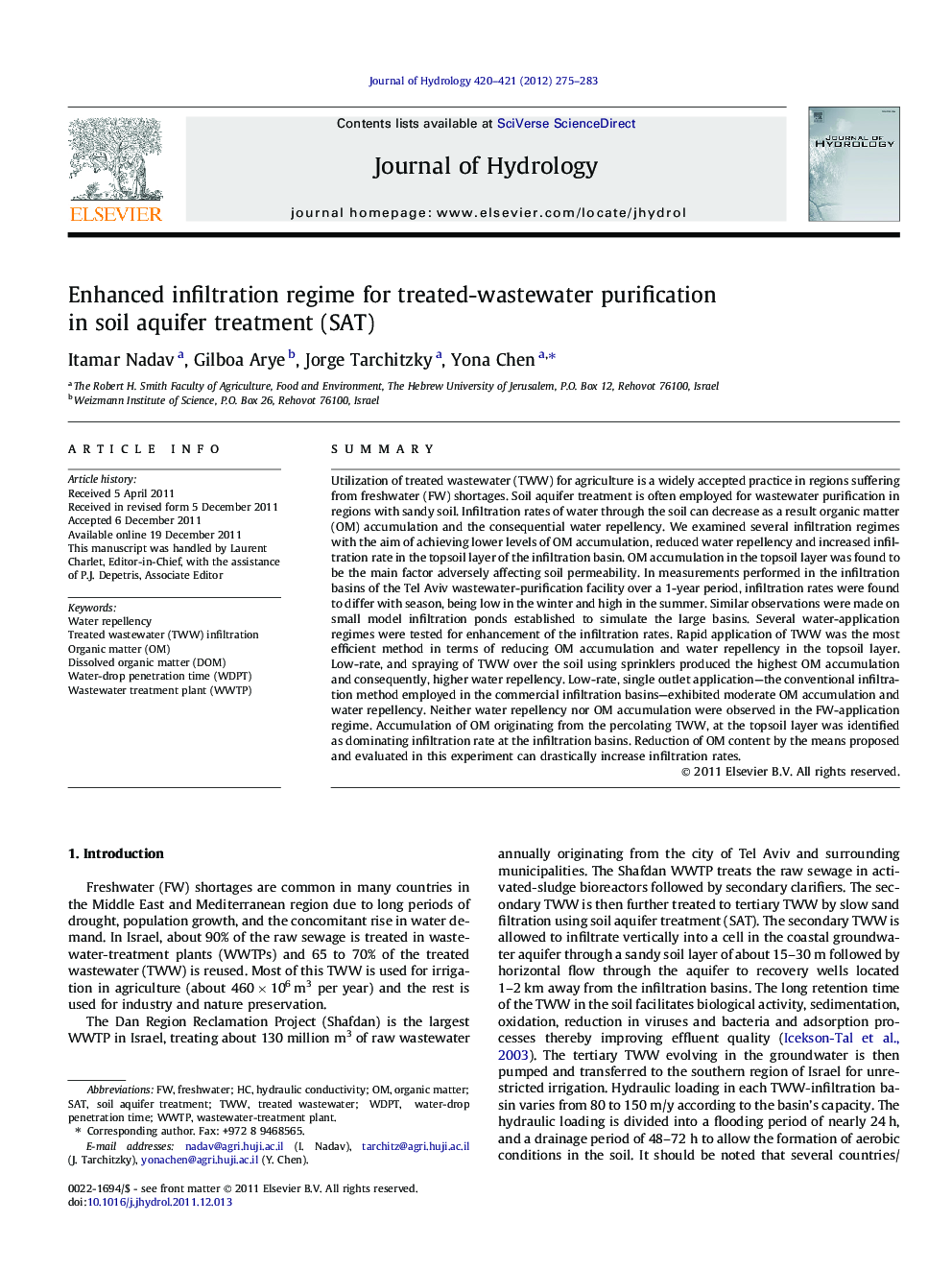| کد مقاله | کد نشریه | سال انتشار | مقاله انگلیسی | نسخه تمام متن |
|---|---|---|---|---|
| 4577172 | 1630001 | 2012 | 9 صفحه PDF | دانلود رایگان |

SummaryUtilization of treated wastewater (TWW) for agriculture is a widely accepted practice in regions suffering from freshwater (FW) shortages. Soil aquifer treatment is often employed for wastewater purification in regions with sandy soil. Infiltration rates of water through the soil can decrease as a result organic matter (OM) accumulation and the consequential water repellency. We examined several infiltration regimes with the aim of achieving lower levels of OM accumulation, reduced water repellency and increased infiltration rate in the topsoil layer of the infiltration basin. OM accumulation in the topsoil layer was found to be the main factor adversely affecting soil permeability. In measurements performed in the infiltration basins of the Tel Aviv wastewater-purification facility over a 1-year period, infiltration rates were found to differ with season, being low in the winter and high in the summer. Similar observations were made on small model infiltration ponds established to simulate the large basins. Several water-application regimes were tested for enhancement of the infiltration rates. Rapid application of TWW was the most efficient method in terms of reducing OM accumulation and water repellency in the topsoil layer. Low-rate, and spraying of TWW over the soil using sprinklers produced the highest OM accumulation and consequently, higher water repellency. Low-rate, single outlet application—the conventional infiltration method employed in the commercial infiltration basins—exhibited moderate OM accumulation and water repellency. Neither water repellency nor OM accumulation were observed in the FW-application regime. Accumulation of OM originating from the percolating TWW, at the topsoil layer was identified as dominating infiltration rate at the infiltration basins. Reduction of OM content by the means proposed and evaluated in this experiment can drastically increase infiltration rates.
► Infiltrating TWW induces pond soil surface water repellency.
► Application of DOM induces water repellency and infiltration reduction.
► Alteration of TWW application regime on the soil surface can reduce repellency.
► Rapid TWW application on the soil reduced surface water repellency.
► Rapid TWW application on the soil increased TWW infiltration into the soil.
Journal: Journal of Hydrology - Volumes 420–421, 14 February 2012, Pages 275–283